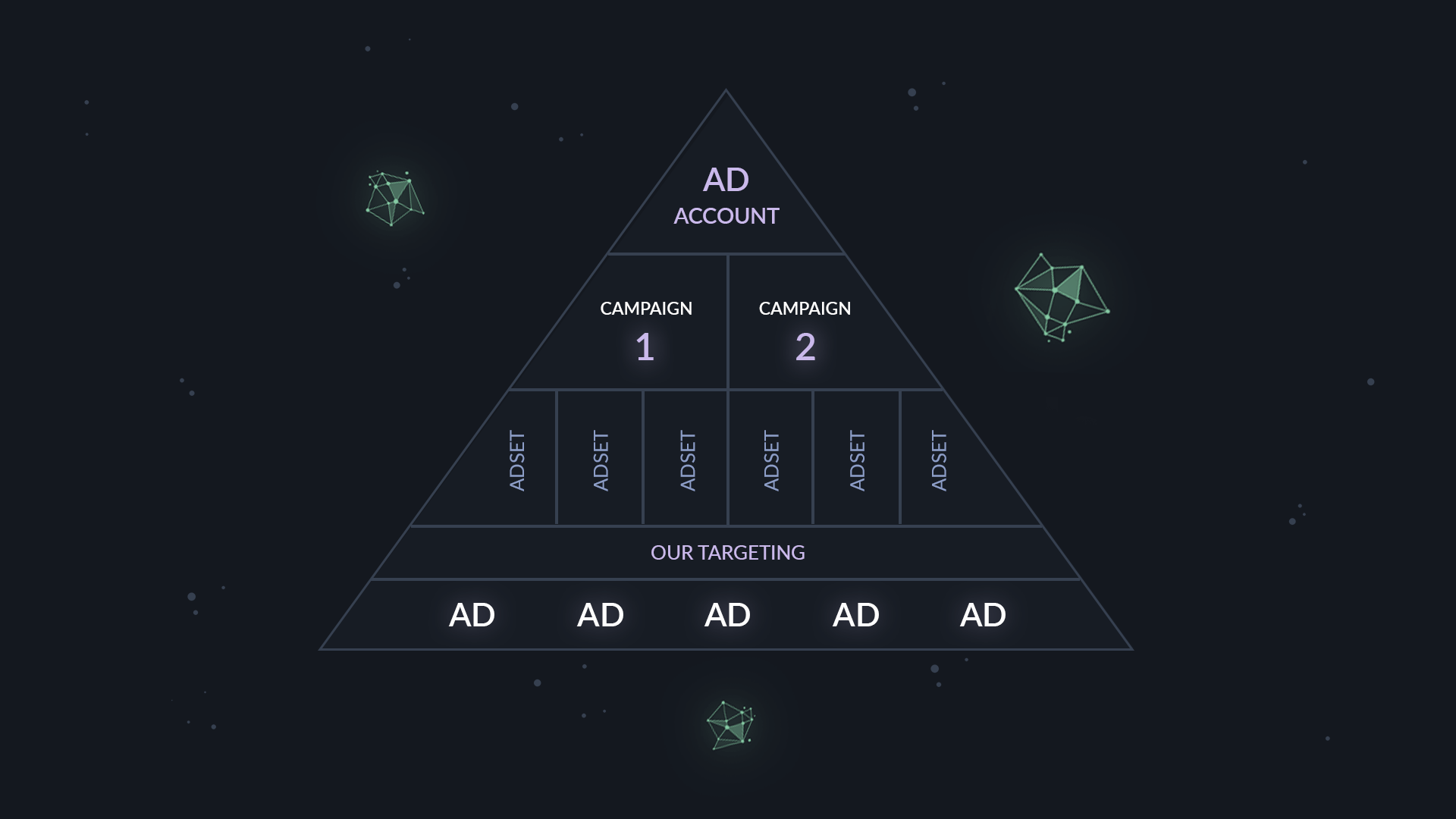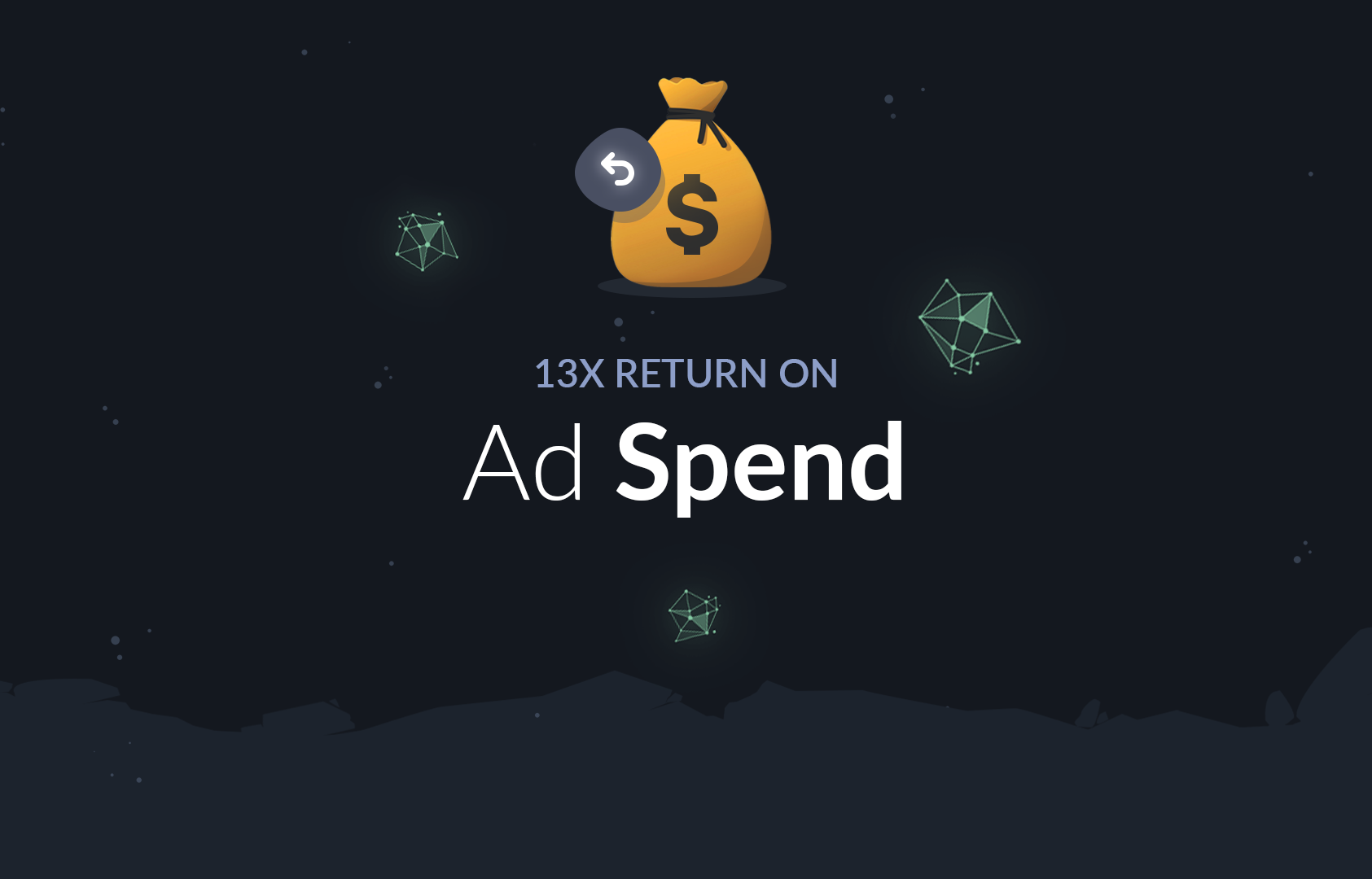Scaling Your Business With Social Media Marketing 13X Return on Ad Spend
STEP-BY-STEP CASE STUDY
A little back-story
The client is a brand that is selling specific professional products & niche education in the professional beauty sector. Being pushed around by competitors with huge budgets and popular influencers, costing millions of dollars, we had to achieve results with very limited material to work with. A business that has relied on outbound sales for the past 10 years now had moved to effective digital marketing and every penny had to bring results. We used the power of targeting and optimization on social media, paired with great e-mail automation to make a success out of a dire situation.
In this case study, we will show you that achieving more than 10x return on your ad spend (ROAS) in social media is still very possible.
Starting at the end of August 2019 up to the end of April 2020 these are our results only from Facebook Ads:

While this is not a huge budget endeavor or some “unbelievable result”, it is a very solid overall performance achieved without any manipulated numbers. Getting more than 10x return on your investment in advertising is usually always a great result.
So let us show you how it works!
Planning & Strategy
Before you start marketing your products or services you should always have a plan.
Defining the marketing budget and our target costs is a separate job on its own that should be performed by someone who knows what they are doing. Understanding the business & marketing fundamentals of today’s digital businesses is the key to success. We have created a complete course on all these topics and the first module which covers the fundamentals of business is free. You can find it here https://startupmasters.eu/masters-academy.
Understanding the business and its needs include gaining in-depth knowledge of your products and audience. We sourced the in-depth knowledge about the products and customer understanding from the CEO of the company. Research is always a big part of the preparation.
Now, regarding the technical part of things…
Initial Setup
It is very important that the preparation is done before launching your ads on Facebook & Instagram. This means that:
- Everything works on your website, as bad user experience is going to hurt your conversions a lot.
- Your tracking and events are set up correctly and working well.

Make sure your Facebook pixel is in order and tracking all events. In our case, we had to set up a few custom events and we had campaigns that were optimized for these specific events.
The website platform was Shopify in this case, so using the default Facebook and google integrations with very little extra work everything was working fine.
You can learn the basics of the Shopify integration with Facebook tracking pixel here:
https://www.facebook.com/business/help/646757258759189
https://help.shopify.com/en/manual/promoting-marketing/analyze-marketing/facebook-pixel
The Campaigns Structure
The way we set up our Ad Campaign structure in Facebook Ads Manager is like a pyramid. On top of it lies the campaign, which has its own separate objective. We make this so we can differentiate easily between campaigns and optimize them.
From all possible campaign objectives the ones we found that work best are the Conversions objectives. Most of our campaigns have Conversions as an objective and from then on we use different conversions on AdSet levels – for example Add to Cart or directly Purchase objectives.
As we had custom conversions created for this business we had campaigns and ad sets optimized for these custom conversion events.
We also had good results with the Lead Generation objective, as we created high-converting lead ads that collected qualified leads for us, which we then used for remarketing.
Structured like this, based on their goals and objectives, the campaigns contain our Adsets, which define our targeting and precise goals. Each campaign contains a number of Adsets and this way we can start from the top to the bottom of the structure when we analyze and optimize our ads.
This is how the pyramidal structure of our Ad Manager looks like in short:

The Targeting
This is by far one of the most important things to nail in order to have great results. For our different campaigns, we used several targeting methods and tricks.
Our niche was very specific but very hard to target on social media, so we had to mix things up a bit.
Manually Targeted Audiences
This classic method of targeting is very underrated but it is the backbone of every successful campaign. We used this method pretty much in all of our campaigns. The way we managed to reach our target audience was the following:
- We started with broad targeting and we were incrementally narrowing it down.
- Using Geographic Location & Language to set our targeting to our target areas.
- We used the gender and age targeting as well, as we had previously figured out our customer persona, based on previous customer data (if you don’t have previous customer data, you should do your research, of course).
- From then on we used the interest and behaviors targeting to find our audience. It is very important to have a keen knowledge of your customer so you can use these correctly.
Usually, it is not enough to just list all interests and behaviors relevant to your target customers, so what we did was cross-target by several combinations of interests and behaviors by using the Narrow Audience option – users must be interested in A/B/C AND in X/Y/Z for example. You can further narrow this down as well using the same logic.
Remember the goal is not only to target the people you want but also to not target the ones you don’t want.
Custom Audiences from your Lists
We used all old customer data and imported it to our custom audiences. Also we were dynamically importing all generated leads from our lead generation campaigns to separate custom list audiences.
It is really important when having customer data from your online store to export it with all fields, including the total spend of each customer. This way we can leverage the import of custom lists including customer LTV (lifetime value) to create and use value-based audiences.
Users who interacted with your FB page and Instagram profile
This is pretty self-explanatory, we are using this targeting option to create a custom audience from our social media profiles.
Lookalike Audiences
This is where it gets fun – we took all of our custom audiences and used them to create lookalikes. The lookalike audiences use your custom audience to match the people in it and create a new audience with the maximum resemblance in interests and profiles.
The best performing lookalike audiences were these of the high-value customers that we imported.
In order to have more precise targeting, however, we had to cross match and narrow down the lookalike audiences on Adset level with some additional interests and behaviors in order to reach to the exact people we were looking for without showing ads to people outside of our most desired audience. Efficiency is key!
Remarketing Audiences from Website activity
These are the visitors of our website, specific pages of it, abandoned carts, etc. We are using different types of website activity to structure our Remarketing. These audiences in remarketing campaigns will always bring you the cheapest conversions.
Additionally we were constantly optimizing our targeting by device and narrowing down the age of our users, as different ad copies performed better on different platforms. This leads us to the…
Ad Copy & Messaging
There are certain rules to create a high-performing ad copy. However, no matter what some “gurus” might preach, besides the basic guidelines, it all comes down to one single word: TESTING.
Different ads will perform in a different way on different devices/placements and appeal to some people in your audience but not to others. This is why we did extensive testing of different types of ads for all our different offers.
It turned out that somewhere we had video ads that were performing great, but for other offers the good old single image ads were winning.
Overall, single image ads still perform amazing, if they do a good job at showcasing your offer, appeal to the audience, and stand out.
The types of ads are very dependant on the goals of the campaign. You have to pay close attention to your planned customer journey and take customers from start to conversion with your messaging. And don’t forget to upsell and retain them.
The awareness stage is where we have to capture the attention of our target audience by presenting them with solutions to their potential problems or introducing them to an offer that intrigues them. In the following steps we unveil more details about our offers and promos. The remarketing ads always bring the biggest ROAS but in order for them to be effective you have to have very attractive messaging. Ads that contain testimonials of real people, real reviews and real user-generated content are something you should definitely use in your campaigns.
The Tricks That Boost Conversions
Scale your ad copies and use them in different ad sets and campaigns, while keeping engagement.
Ad copies with engagement(meaning lots of comments and likes) perform much better, as they have already gathered social traction, people usually read the comments and if you have positive feedback and reviews from other users they will perform great. Sometimes a few comments with real feedback will make the difference needed to gain a new customer.

Read your Facebook and Instagram comments
Your posts and ad copies will generate comments from users as they get impressions. We use this to identify potential issues to fix, evaluate ad copy performance, and to validate that things are working on the business side of things. This feedback is invaluable! Use it well.
Optimize your landing page
Your landing page or product page should be well optimized. You can use software that records user sessions like Hotjar https://www.hotjar.com/ and analyze what users struggle with on your website. Do daily analysis, change what is necessary, and do extensive testing until it’s really clear and easy for your customers to understand your offer and convert.
Run smart remarketing
Create custom audiences of visitors on your landing page, users who started checkout (initiate checkout and/or add to cart events), update them, and run campaigns specifically for these users. These campaigns that bring back interested people will generate great revenue.
Kill unsuccessful campaigns and ad sets on time
Achieving great results in digital marketing means that you constantly test new things and optimize. Don’t be afraid to shut down all campaigns and ad sets that underperform after 2-3 days. This is usually a good enough window to test and see how well your targeting and ad copies are performing, depending on your budget of course.
Upsell to your customers
If you are not running specific remarketing campaigns to upsell more of your products or services to your already converted users, you are losing money. Create custom audiences and pick carefully what and how to advertise to them. If they were happy with their previous purchase, there is a big chance that they will be your customers again! You should just remind them and push them a little bit.
Make sure you are using Advanced matching
In the options of your Facebook pixel you can activate Advanced matching. This way your tracking collects more user data that your customers have provided to your business, such as email address or phone number, to match your website’s visitors to people on Facebook and Instagram. Using this powerful option will help you have better audiences and more effective remarketing. Usually you should be able to use the Automatic option, if not there is a Manual way to set up Advanced matching, for which you will need the help of a developer.

Use custom conversions and optimize your campaigns for them
Not all of the desired results will be tracked with the default conversions of your Facebook pixel. Or sometimes optimizing for standard events will bring more expensive conversions and poor general results. You should think carefully, examine your website experience, and create the needed custom conversions. Then start optimizing your campaigns for these conversions. Good results should follow!
Set up your report columns with different valuable metrics
The default columns that Facebook Ads Manager presents to you are usually not enough to grasp all the factors that are needed to make a campaign successful. This is why you should always create a custom columns profile, featuring important stats of your campaigns, ad sets, and ads. This is how you will get all the important information with one look and know what to change in your campaigns, which ones are doing good, and which ones are not.

The Results
For this campaign we managed to generate $1,449,607 of revenue only via Facebook with $105,820 total spend. This is not accounting for much more revenue that we got from our e-mail campaigns and other channels. The Return on ad spend for all our activities on Facebook (including testing budgets & unsuccessful campaigns) comes up at 13.70x, which is a really solid number. The bonus is that the customer lifetime value of this business is quite high, so we will benefit from the newly acquired customers a lot more – they will continuously bring us more revenue. If you want to learn more about customer lifetime value, budgeting and business strategy check out our free digital business fundamentals course here: https://startupmasters.eu/masters-academy
We hope that you learned valuable things from this lengthy blog post! If you have any questions or would like to check out other things we did, feel free to visit our website https://startupmasters.eu/ and contact us.


